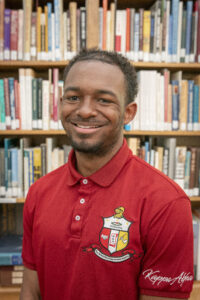This post is part of our blog series “Scholars Speak,” which features writing from our 2025 cohort of Preservation Scholars. Click the link to learn more about this donor-funded program that aims to increase the breadth of voices in the Texas historical narrative by placing students from underrepresented cultural and ethnic backgrounds in paid, 10-week long summer internship positions at the Texas Historical Commission.
Scholars Speak: The Moorland YMCA and Maria Morgan YWCA—Beacons for African Americans in 20th Century Dallas

As I completed the first five weeks of this internship, it truly exceeded my wildest expectations. The 2025 Preservation Scholar program has provided me with the opportunity to develop meaningful professional connections, gain new experiences, and broaden my perspective on the various career paths within the Texas Historical Commission. This summer, I am working on the African American Travel Guide Survey project with Leslie Wolfenden, THC’s Historic Resources Survey Coordinator.
During the Jim Crow era, African Americans were prohibited from utilizing the same roadside accommodations such as hotels, restaurants, gas stations, mechanics, and clinics, available to white Americans while traveling. These discriminatory practices presented challenges to African Americans traveling across the United States during the 20th century. To help combat the uncertainties African Americans faced while on the road, various travel guides were developed beginning in the early 1930s. These travel guides listed establishments that were available to African Americans, and they eventually became an essential item for every road trip. The Negro Motorist Green Book, established by Victor Hugo Green in 1936, became the most popular and well-known of the African American travel guides throughout the 20th century.
This summer, I am focused on Dallas sites that were listed in the African American travel guides—specifically, the Moorland YMCA and Maria Morgan YWCA—as these organizations were community hubs for African Americans during the 20th century. The Moorland YMCA and
Maria Morgan YWCA were the “colored” branches of their respective organizations in Dallas, as segregationist policies did not allow African Americans to become members of the main branches. The Moorland YMCA organization was founded in 1902, but did not have a dedicated building until 1930 with the Moorland Building that still stands today. The organization provided a safe location for African American boys to develop into young men and foster positive relationships through extracurricular activities. The Moorland Y also offered overnight accommodations for African American travelers visiting Dallas as there was a severe lack of hotel rooms available to African Americans. The Moorland Y soon became a “beacon for the Dallas African American community*” as it was one of the few places established to support Black people and gather amongst themselves outside of the church.
The Maria Morgan branch of the YWCA for Black women and girls opened in 1928. The branch was cofounded by two prominent African American women: Frederica Chase Dodd and Ethelyn Mildred Taylor Chisum. The purpose of the YWCA was to develop young African American girls into women and to provide them with the necessary skills to support themselves. The YWCA provided educational opportunities for Black women, which were severely limited during the Jim Crow era.
The Moorland YMCA and Maria Morgan YWCA are important historical landmarks that showcase the interconnectedness and accomplishments of the African American community in Dallas throughout the Jim Crow era. Working on this project has been immensely rewarding because I learn something new every day, and it has deepened my understanding of the immense obstacles African Americans faced in the Jim Crow era.
* Quimby McCoy Preservation Architecture, LLP. “History of Moorland YMCA”, Page 4, February 18, 2008, Accessed July 16, 2025.